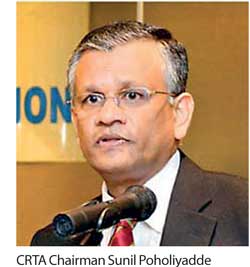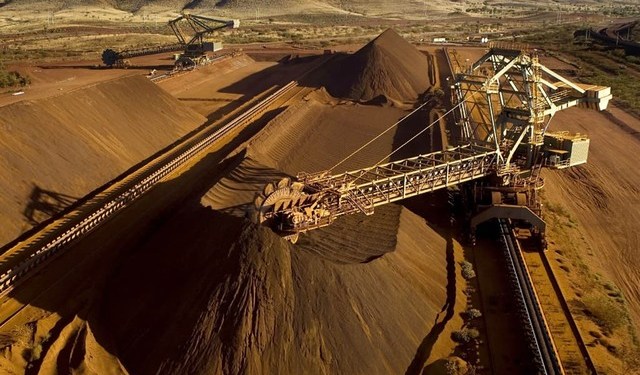By Zahara Zuhair
The Colombo Rubber Traders’ Association (CRTA) recently stressed the industry, together with the government should urgently come up with a mechanism to retain the smallholders during times of rubber price decline in order to ensure adequate supply to rubber products manufacturers.
 “If the price drops many of the smallholders would go out of tapping and look for other employment.
“If the price drops many of the smallholders would go out of tapping and look for other employment.
And the worse situation is some destroy the rubber for plywood to make money out of the rubber trees. This has a long-term impact; this is an issue we have seen over the last few years,” CRTA Chairman Sunil Poholiyadde said at CRTA’s 98th Annual General Meeting (AGM) held last Friday.
In Sri Lanka, almost 70 percent of the rubber production comes from the smallholder sector. In 2016, the rubber price hit a low of nearly Rs.200 a kilo, whereas the growers were used to a price level of almost Rs.600 a kilo. This has resulted in many rubber growers discontinuing harvesting and some going to the extent of uprooting rubber trees to generate funds they require.
However, Poholiyadde noted that he is glad to see natural rubber prices seeing an increase, exceeding Rs.400 a kilo at the Colombo auction this month.
At the same time, he said the domestic rubber consumption has also seen an increase from 127 million kilos in 2015 to 142 million kilos in 2016.
Sri Lanka had to import a portion of its requirement due to the low production in the country.
Sri Lanka’s rubber production fell 11 percent year-on-year to 79 million kilos in 2016.
Pholiyadde attributed the lower production to reduced prices due to external reasons and adverse weather conditions.
“Traditional rubber growing areas have more rainfall than experienced before, while areas such as Ratnapura becoming not so economical.
There have been extremely dry spells, extremely long periods of wet weather, whi ch have hampered the tapping operation and as a result there has been a drastic drop in production. So, we need to get in to non-traditional areas for cultivating rubber, open new areas of rubber cultivation,” he stressed.
He said that another major factor for the drop in production is the alienation of the rubber land for urbanization and other industries.
“I am informed by the Planters’ Association that a further 2500 hectares of rubber land of the Regional Plantation Companies (RPCs) have been identified for acquisition, to be used for other industrial purposes.
This becomes a major threat to the industry, and I appeal to the authorities to carefully analyse the situation since RPC’s production would drastically drop in the future if this continues to happen,” he said.
Pholiyadde said he is confident that if alternate additional land is offered to RPCs, most of them who have downstream value addition, would accept this offer, where land could be offered from non-traditional areas, and the country as a whole will benefit from additional exports of value added natural rubber products.
With regard to the Rubber Master Plan which was launched in 2016, he said that if this plan is to be achieved, in his view a fair amount of production has to take place within the country even to attract or expand the current value addition.
If not, manufacturers would prefer to set up or relocate their facilities in countries where rubber is grown, which would obviously be feasible considering freight charges for raw materials, he remarked.
“I’m afraid to say if we do not produce and if the raw materials have to be imported from other countries, the manufacturer may move out, which has happened in the recent past.
Even countries like Malaysia and Indonesia who produce palm oil, they support the smallholders to grow rubber and supply, assuring volume. I don’t think anyone would like to invest without assured supply,” he stressed.
“Therefore, I reiterate that the cultivation of rubber needs to be expanded on a solid plan,” he said.
According to the Rubber Master Plan, the production has to increase to 300,000 metric tonnes by 2045 and also with value addition the export revenue should go up to US $ 5 billion by year 2030.
Rubber imports, a temporary measure: Govt.
Articulating the thoughts of Plantation Industries Minister Navin Dissanayake, his Advisor Lakna Paranawithana, who attended the event on the minister’s behalf said, the government’s decision to allow a maximum of 1000 metric tonnes of rubber to be imported through the State Trading Corporation (STC) within a period of three months, would not affect the local market because an adjustment of customs import duty will keep the cost of imported rubber over local auction prices.
“Please bear in mind that the government must balance the interests of producers as well as rubber consumers who add value to local raw rubber,” Paranawithana said, assuring that it is going to be strictly a temporary policy measure to keep the value-added industry going.
He said that as the industry last year recorded the lowest ever rubber output in its history, to arrest this alarming trend, it is important to enhance the productivity and quality through innovation that will bring down costs.
“Last year, we had recorded the lowest ever rubber output in Sri Lanka. This is the direct response of most of our producers to price signals.
They are apparently not productive compared with some of our global competitors as well as local producers. Such producers need guidance and motivation,” he said.
“The Rubber Master Plan has proposed nine new projects to improve rubber production, productivity, and quality,” he added.
Paranawithana noted that after the successful completion of the International Fund for Agricultural Development (IFAD) funded 5,000-hectare project in Moneragala with an investment of US $ 22 million, they have commenced a Smallholder Tea and Rubber Revitalization (STARR) project to add another 3,000 hectares of small holdings in Ampara and Moneragala.
He also said they are exploring the possibilities of planting rubber in suitable areas in Northern and Eastern regions.
“Negotiations have taken place with the Northern and Eastern provincial councils, and we are trying to obtain land. Technically it is approved, now it is about getting social acceptance,” he said.
He further said that the ministry is organizing an international trade fair in Colombo to be held in August covering rubber, tea and coconut value chains.


























